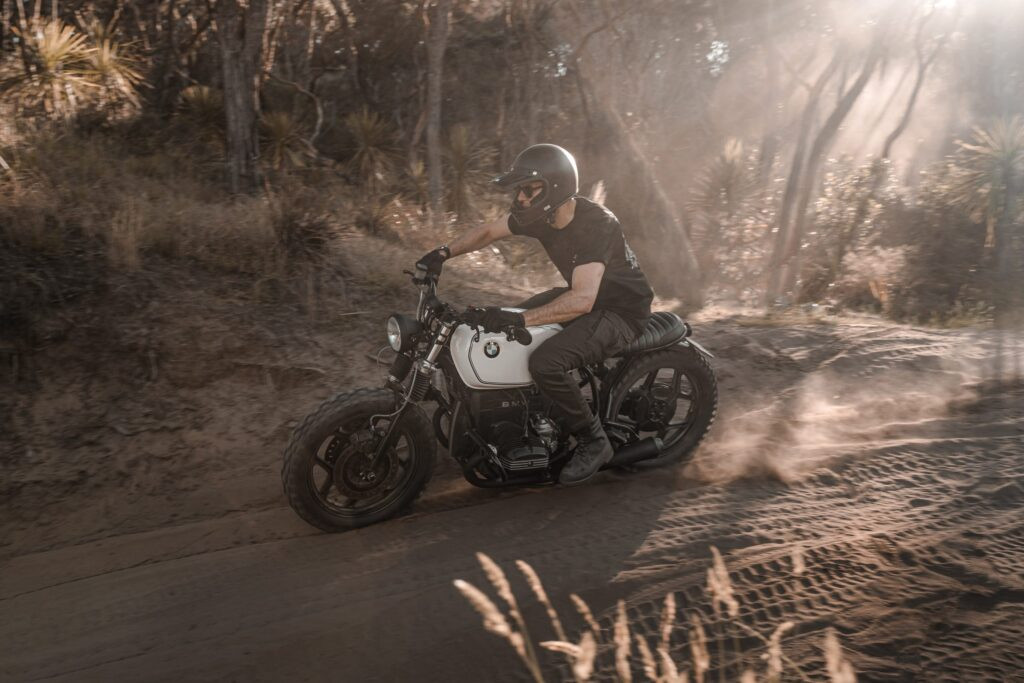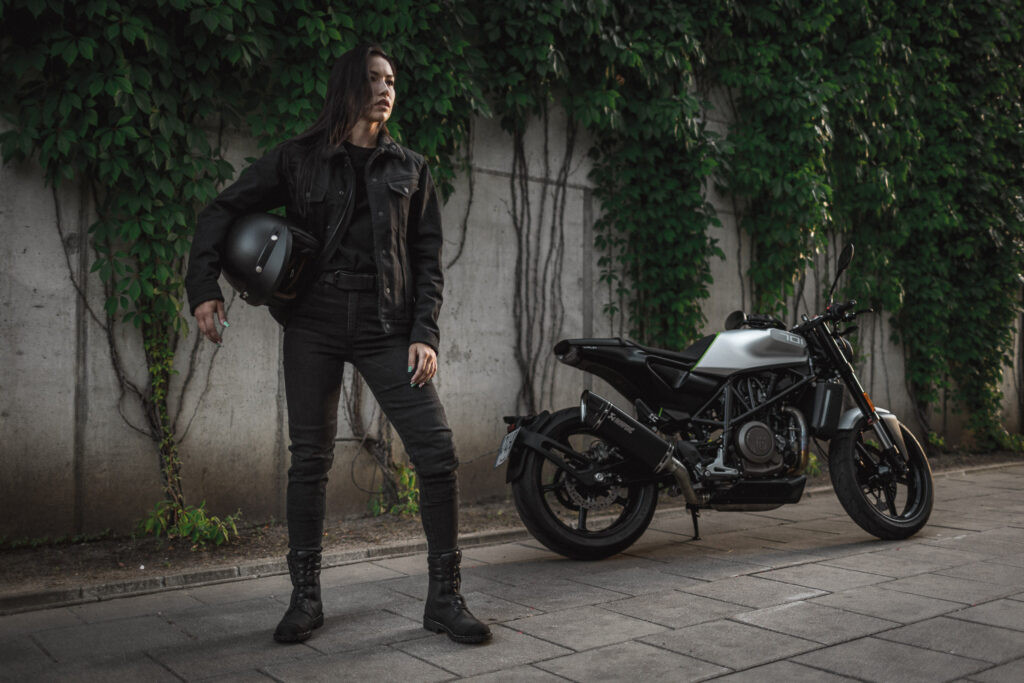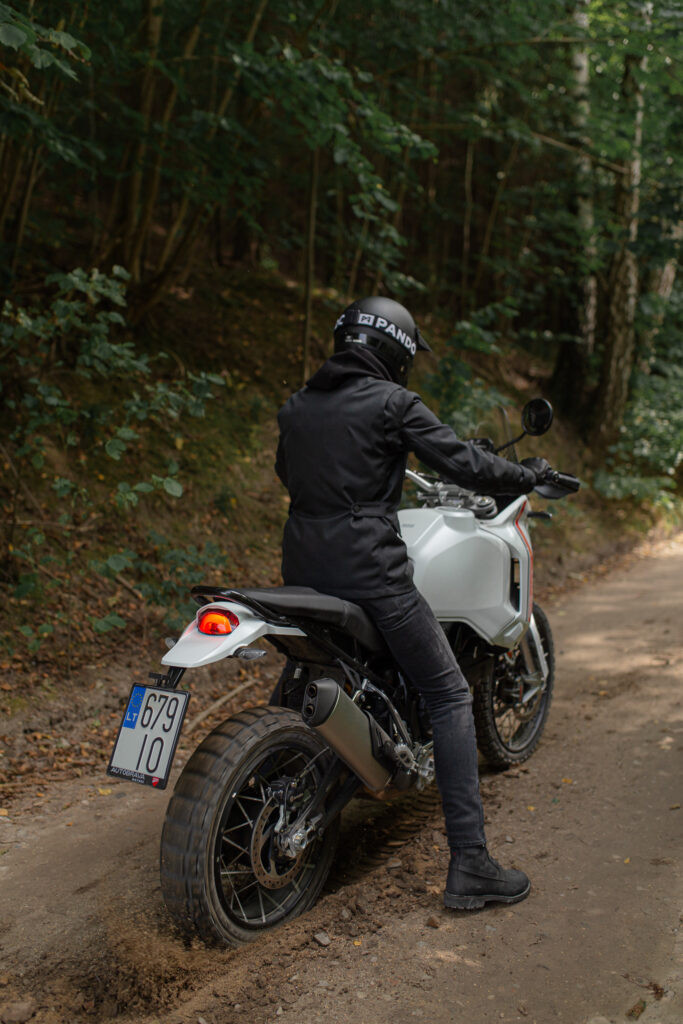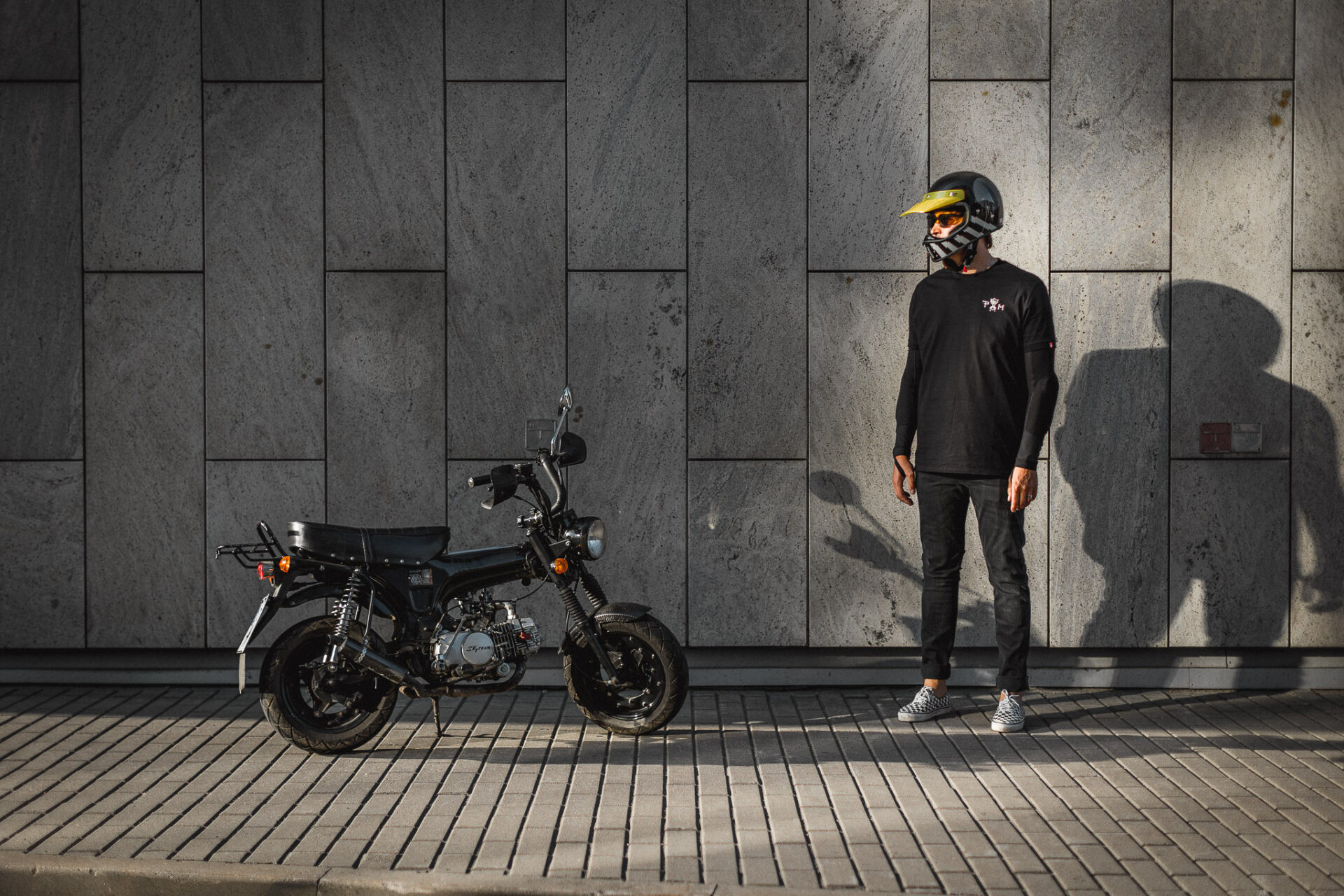How Much Is A Sport Bike, really? If you’re eyeing the sleek lines and thrilling performance of a sport bike, understanding the costs is crucial. At usabikers.net, we break down sport bike prices, covering new and used options, and what factors influence their value. Let’s explore the world of sport bikes, and learn about motorcycle insurance, motorcycle financing, and motorcycle maintenance costs, ensuring you make an informed decision.
1. What is the Average Cost of a New Sport Bike?
The average cost of a new sport bike typically ranges from $8,000 to $22,000, depending on engine size, brand, and features. Sport bikes offer a thrilling blend of speed, agility, and aggressive styling, making them a popular choice for adrenaline enthusiasts. Let’s examine the different factors that contribute to this price range.
- Engine Size: Smaller displacement sport bikes (300cc-600cc) generally start at the lower end of the price range, while larger, more powerful models (1000cc+) command higher prices.
- Brand Reputation: Established brands like Kawasaki, Honda, Ducati, Aprilia, and Suzuki often have a premium due to their reputation for performance and reliability.
- Features and Technology: Advanced features like electronic rider aids, adjustable suspension, and high-end braking systems can significantly impact the price.
Example: A Kawasaki Ninja 650 might cost around $8,299, while a high-performance Ducati Panigale V4 can exceed $22,000.
2. What is the Average Cost of a Used Sport Bike?
The average cost of a used sport bike can range from $3,000 to $15,000, depending on the bike’s age, condition, mileage, and history. Buying a used sport bike can be a cost-effective way to enter the sport bike world, but it requires careful inspection and due diligence. Let’s look at the factors that influence the price of used sport bikes.
- Age and Mileage: Older bikes with high mileage will typically be priced lower than newer models with fewer miles.
- Condition and Maintenance: A well-maintained bike with a clean title and no history of accidents will command a higher price.
- Modifications and Upgrades: Aftermarket modifications can either increase or decrease the value, depending on their quality and desirability.
Example: A used Honda CBR600RR from the late 2000s might be found for around $4,000 to $6,000, while a newer Yamaha YZF-R1 in excellent condition could cost upwards of $12,000.
 Used Sport Bike Condition
Used Sport Bike Condition
3. What Factors Determine Sport Bike Prices?
Sport bike prices are influenced by a variety of factors, reflecting the complex interplay of performance, technology, and market demand. Understanding these factors can help you make an informed decision and find the best value for your money.
- Manufacturer: As noted by motorcycle industry analysts at Statista, premium brands like Ducati and Aprilia often command higher prices due to their reputation for performance and exotic design.
- Model: Higher-spec models within a brand’s lineup, such as the Kawasaki Ninja H2, will be more expensive due to their advanced features and performance capabilities, notes Cycle World’s comparison of top sport bikes in 2024.
- Availability: Limited edition or rare models often fetch higher prices due to their exclusivity and collectibility.
- Year: Newer models typically have higher prices due to technological advancements and updated features.
- Power and Performance: Higher horsepower and torque figures often translate to higher prices, as noted in Motorcyclist Magazine’s sport bike reviews.
- Brand Reputation: Brands with a strong racing heritage, such as Yamaha and Suzuki, may command higher prices due to their proven performance.
- Motorcycle Type: Sport bikes, designed for speed and agility, generally have a higher price point compared to cruisers or standard motorcycles.
- Add-ons and Accessories: Optional extras, such as performance exhausts or upgraded suspension, can increase the overall price.
- Tax, Delivery, and Dealer Costs: These additional costs can vary by location and dealer, influencing the final out-the-door price, as reported by the American Motorcyclist Association (AMA).
4. New vs. Used Sport Bikes: Which is the Better Choice?
Deciding between a new and used sport bike depends on your budget, priorities, and risk tolerance. Each option has its advantages and disadvantages, which should be carefully considered.
New Sport Bikes
- Pros:
- Warranty: New bikes come with a manufacturer’s warranty, providing peace of mind and protection against unexpected repairs.
- Latest Technology: New models feature the latest advancements in engine design, electronics, and safety features.
- Customization: You can customize a new bike to your exact preferences with factory options and aftermarket accessories.
- Clean History: You’ll have a clean title and no worries about previous accidents or neglect.
- Cons:
- Higher Price: New bikes are significantly more expensive than used models.
- Depreciation: New bikes depreciate rapidly in the first few years of ownership.
- Insurance Costs: Insurance rates are typically higher for new sport bikes due to their higher value.
Used Sport Bikes
- Pros:
- Lower Price: Used bikes offer significant cost savings compared to new models.
- Slower Depreciation: Used bikes have already undergone their initial depreciation, so they retain their value better over time.
- Customization Potential: You can often find used bikes with desirable aftermarket modifications already installed.
- Cons:
- No Warranty: Used bikes typically do not come with a manufacturer’s warranty, increasing the risk of unexpected repairs.
- Unknown History: It can be difficult to verify the bike’s maintenance history and accident record.
- Potential for Hidden Problems: Used bikes may have hidden mechanical issues that are not immediately apparent.
- Higher Maintenance Costs: Older bikes may require more frequent maintenance and repairs.
Recommendation: If you prioritize peace of mind, the latest technology, and customization options, a new sport bike is the better choice. However, if you’re on a budget and willing to accept some risk, a used sport bike can be an excellent value.
5. How Do Sport Bike Prices Vary by Engine Size?
Sport bike prices generally increase with engine size, reflecting the increased power, performance, and complexity of larger engines. Engine size is a primary factor influencing the cost of a sport bike.
300cc-400cc Sport Bikes
- Price Range: $5,000 – $7,000
- Examples: Kawasaki Ninja 300, Yamaha YZF-R3, KTM RC 390
- Characteristics: Entry-level sport bikes, lightweight, nimble handling, suitable for beginners and urban riding.
600cc-750cc Sport Bikes
- Price Range: $9,000 – $13,000
- Examples: Honda CBR600RR, Yamaha YZF-R6, Suzuki GSX-R750
- Characteristics: Mid-range sport bikes, more powerful engines, advanced suspension, suitable for experienced riders and track days.
1000cc+ Sport Bikes
- Price Range: $16,000 – $22,000+
- Examples: Kawasaki Ninja ZX-10R, Yamaha YZF-R1, Ducati Panigale V4
- Characteristics: High-performance sport bikes, powerful engines, advanced electronics, suitable for experienced riders and professional racing.
Note: These price ranges are approximate and can vary depending on the specific model, features, and market conditions.
 Sport Bikes by Engine Size
Sport Bikes by Engine Size
6. How Do Sport Bike Prices Vary by Brand?
Sport bike prices can vary significantly by brand, reflecting differences in reputation, performance, and manufacturing costs. Each brand has its own unique identity and target market.
Japanese Brands (Kawasaki, Honda, Yamaha, Suzuki)
- Price Range: Generally more affordable
- Reputation: Known for reliability, affordability, and practicality.
- Target Market: Entry-level and mid-range riders.
European Brands (Ducati, Aprilia, BMW)
- Price Range: Generally more expensive
- Reputation: Known for high performance, advanced technology, and exotic design.
- Target Market: Experienced riders and enthusiasts.
Note: These are general trends, and there can be exceptions within each brand’s lineup.
7. What are the Additional Costs of Owning a Sport Bike?
In addition to the purchase price, owning a sport bike involves several additional costs that should be factored into your budget. It is important to consider all these potential costs.
- Motorcycle Insurance: Sport bikes typically have higher insurance rates than other types of motorcycles due to their high performance and increased risk of accidents.
- Motorcycle Gear: Essential safety gear, such as a helmet, jacket, gloves, and boots, can cost several hundred dollars.
- Motorcycle Maintenance: Regular maintenance, such as oil changes, tire replacements, and brake service, can add up over time.
- Motorcycle Registration and Taxes: Registration fees and taxes vary by state and can be a significant expense.
- Motorcycle Storage: If you don’t have a garage, you may need to pay for storage.
- Motorcycle Accessories: Optional accessories, such as a performance exhaust, can further increase the cost of ownership.
Tip: Research insurance rates, maintenance costs, and registration fees in your area before buying a sport bike to avoid surprises.
8. How Can You Finance a Sport Bike Purchase?
Financing a sport bike purchase is a common option for many buyers, allowing them to spread the cost over time. Understanding the different financing options and interest rates is crucial for making an informed decision.
- Motorcycle Loans: Banks, credit unions, and motorcycle dealerships offer motorcycle loans with varying interest rates and terms.
- Personal Loans: You can also use a personal loan to finance a sport bike purchase, although interest rates may be higher.
- Credit Cards: Using a credit card for a sport bike purchase is generally not recommended due to high interest rates and potential for debt.
Tip: Shop around for the best interest rates and loan terms before committing to a financing option.
9. What Motorcycle Insurance Do You Need for a Sport Bike?
Motorcycle insurance is essential for protecting yourself and your sport bike in the event of an accident. Understanding the different types of coverage and choosing the right policy is crucial.
- Liability Coverage: This covers damages and injuries you cause to others in an accident.
- Collision Coverage: This covers damage to your sport bike in an accident, regardless of fault.
- Comprehensive Coverage: This covers damage to your sport bike from theft, vandalism, or natural disasters.
- Uninsured/Underinsured Motorist Coverage: This covers your injuries and damages if you’re hit by an uninsured or underinsured driver.
Tip: Compare quotes from multiple insurance companies to find the best coverage at the most affordable price.
10. How Can You Maintain Your Sport Bike to Preserve Its Value?
Regular maintenance is essential for preserving the value and performance of your sport bike. Following a consistent maintenance schedule and addressing issues promptly can prevent costly repairs and extend the life of your bike.
- Regular Oil Changes: Changing the oil and filter at recommended intervals keeps the engine running smoothly and prevents wear.
- Tire Maintenance: Maintaining proper tire pressure and replacing worn tires ensures optimal handling and safety.
- Brake Service: Inspecting and servicing the brakes regularly ensures reliable stopping power.
- Chain Maintenance: Keeping the chain clean, lubricated, and properly adjusted ensures smooth power transfer.
- Fluid Checks: Checking and topping off fluid levels, such as coolant and brake fluid, prevents overheating and ensures proper system function.
- Storage: When storing your bike, use fuel stabilizer, and connect to a trickle charger
Tip: Keep detailed records of all maintenance and repairs to demonstrate the bike’s condition to potential buyers.
 Sport Bike Maintenance
Sport Bike Maintenance
11. What Are the Best Sport Bikes for Beginners?
For beginner riders, choosing a sport bike that is manageable, forgiving, and confidence-inspiring is essential. Starting with a smaller displacement model can help develop skills and build experience before moving up to a more powerful machine.
- Kawasaki Ninja 300/400: These lightweight and nimble bikes offer smooth power delivery and easy handling, making them ideal for beginners.
- Yamaha YZF-R3: With its sporty styling, comfortable ergonomics, and responsive engine, the YZF-R3 is a popular choice for new riders.
- Honda CBR300R/500R: These reliable and user-friendly bikes offer a good balance of performance and affordability, making them a great starting point for aspiring sport bike riders.
- KTM RC 390: With its aggressive styling and sporty performance, the RC 390 offers a more premium experience for beginners looking for a step up from the entry-level models.
Tip: Take a motorcycle safety course and practice in a controlled environment before riding on public roads.
12. What Are the Most Popular Sport Bike Accessories?
Sport bike accessories can enhance the performance, style, and comfort of your ride. Choosing the right accessories can personalize your bike and tailor it to your specific needs and preferences.
- Performance Exhaust: Improves engine performance and adds a sporty sound.
- Adjustable Suspension: Allows you to fine-tune the handling and ride quality.
- Rear Sets: Provides a more aggressive riding position for improved control and comfort.
- Windscreen: Improves aerodynamics and reduces wind blast.
- Frame Sliders: Protects the bike’s frame in the event of a crash.
- Tank Pad: Protects the fuel tank from scratches and scuffs.
Tip: Research accessories carefully and choose reputable brands to ensure quality and compatibility.
13. What Are the Safety Considerations for Riding a Sport Bike?
Riding a sport bike involves inherent risks, and prioritizing safety is crucial. Wearing proper gear, practicing defensive riding techniques, and being aware of your surroundings can significantly reduce the risk of accidents.
- Wear a Full-Face Helmet: A full-face helmet provides the best protection in the event of a crash.
- Wear Protective Gear: A jacket, pants, gloves, and boots made from abrasion-resistant materials can protect you from injuries.
- Take a Motorcycle Safety Course: A safety course can teach you essential riding skills and defensive riding techniques.
- Ride Defensively: Be aware of your surroundings and anticipate potential hazards.
- Avoid Aggressive Riding: Excessive speed and reckless behavior can increase the risk of accidents.
- Maintain Your Bike: Regularly inspect and maintain your bike to ensure it’s in safe operating condition.
- Never Ride Under the Influence: Alcohol and drugs can impair your judgment and reaction time, increasing the risk of accidents.
According to research from the Motorcycle Safety Foundation (MSF), in July 2025, riders who have completed a safety course are significantly less likely to be involved in accidents.
14. Where Can You Buy Sport Bike Gear and Accessories?
Finding the right gear and accessories for your sport bike is essential for safety, comfort, and performance. There are numerous retailers and online stores offering a wide selection of products.
- Local Motorcycle Dealerships: Dealerships offer a wide range of gear and accessories from reputable brands.
- Online Retailers: Online retailers offer a vast selection of gear and accessories at competitive prices.
- Specialty Motorcycle Shops: Specialty shops cater to specific riding styles and offer specialized gear and accessories.
- Used Gear and Accessories: Buying used gear and accessories can save you money, but inspect items carefully for damage.
Tip: Read reviews and compare prices before making a purchase.
 Sport Bike Gear
Sport Bike Gear
15. How Does Location Affect Sport Bike Prices?
Location can influence sport bike prices due to factors such as demand, taxes, and transportation costs. Prices may be higher in urban areas with high demand and in states with higher taxes.
- Urban vs. Rural Areas: Prices may be higher in urban areas due to increased demand and higher operating costs for dealerships.
- State Taxes: States with higher sales taxes may have higher sport bike prices.
- Transportation Costs: Transportation costs can affect the price of sport bikes, especially for models that are not widely available in your area.
Tip: Compare prices from dealerships in different locations to find the best deal.
16. How Much Should You Budget for a Sport Bike?
Determining a realistic budget for a sport bike involves considering all the costs associated with purchase, ownership, and maintenance.
- Purchase Price: Set a budget for the bike itself, considering new vs. used options.
- Gear and Accessories: Allocate funds for essential safety gear and desired accessories.
- Insurance: Get quotes from multiple insurance companies to estimate your annual insurance costs.
- Maintenance: Factor in the cost of regular maintenance, such as oil changes and tire replacements.
- Registration and Taxes: Determine the registration fees and taxes in your state.
- Contingency Fund: Set aside a contingency fund for unexpected repairs or expenses.
Tip: Create a spreadsheet to track all your expenses and stay within your budget.
17. Can You Negotiate the Price of a Sport Bike?
Negotiating the price of a sport bike is possible, especially at dealerships. Being prepared, doing your research, and knowing your limits can increase your chances of getting a good deal.
- Do Your Research: Know the market value of the bike you’re interested in.
- Shop Around: Get quotes from multiple dealerships to compare prices.
- Be Prepared to Walk Away: Don’t be afraid to walk away if the dealer won’t meet your price.
- Negotiate Add-ons: Negotiate the price of add-ons, such as extended warranties or accessories.
- Pay in Cash: Paying in cash can sometimes give you more leverage in negotiations.
Tip: Be polite and professional throughout the negotiation process.
18. What Are the Long-Term Costs of Owning a Sport Bike?
The long-term costs of owning a sport bike extend beyond the initial purchase price. Considering these costs can help you make a more informed decision and avoid financial surprises.
- Depreciation: Sport bikes depreciate over time, reducing their resale value.
- Maintenance: Regular maintenance, such as oil changes, tire replacements, and brake service, can add up over time.
- Repairs: Unexpected repairs can be costly, especially for high-performance models.
- Insurance: Insurance rates can increase over time due to factors such as accidents or traffic violations.
- Fuel: Fuel costs can vary depending on your riding habits and fuel prices in your area.
Tip: Set aside a budget for long-term costs to ensure you can afford to keep your sport bike in good condition.
19. Where Can You Find Sport Bike Communities and Forums?
Connecting with other sport bike enthusiasts can provide valuable information, support, and camaraderie. Online communities and forums are great resources for sharing experiences, asking questions, and finding riding buddies.
- Online Forums: Websites like usabikers.net host forums where sport bike riders can connect and share information.
- Social Media Groups: Facebook groups and other social media platforms offer communities for sport bike riders.
- Local Riding Clubs: Joining a local riding club can provide opportunities for group rides and social events.
- Motorcycle Events: Attending motorcycle events and rallies can connect you with other sport bike enthusiasts.
Tip: Be respectful and contribute to the community to get the most out of these resources.
20. How Does Sport Bike Cost Compare to Other Motorcycle Types?
Sport bike costs can vary significantly compared to other types of motorcycles, reflecting differences in performance, features, and target market.
| Motorcycle Type | Average Price Range (New) | Characteristics |
|---|---|---|
| Sport Bike | $8,000 – $22,000+ | High performance, aggressive styling, designed for speed and agility. |
| Cruiser | $7,000 – $20,000+ | Relaxed riding position, classic styling, designed for comfortable cruising. |
| Touring | $15,000 – $30,000+ | Comfortable for long rides, ample storage, designed for touring. |
| Adventure | $10,000 – $25,000+ | Versatile, capable on and off-road, designed for adventure riding. |
| Standard/Naked | $6,000 – $15,000+ | Versatile, comfortable riding position, designed for everyday riding. |
Note: These price ranges are approximate and can vary depending on the specific model, features, and market conditions.
FAQ Section
1. How much money does a motorcycle cost in the USA?
A motorcycle in the USA typically costs between $5,000 and $20,000 on average, depending on the make, model, and engine size.
2. What are the price ranges of motorcycles in other countries?
Motorcycle prices in other countries can vary significantly. The cheapest motorcycles in China or India can cost as little as $800. In Western European countries and Australia, prices are similar to those in the US. However, in places like Singapore, high import taxes can increase the cost of motorcycles.
3. How much money is the cheapest motorcycle?
In the US, the cheapest motorcycle costs around $4,000. Scooters may be available at a lower price point.
 Cheapest Motorcycle
Cheapest Motorcycle
4. What is the price of a good motorcycle?
A good motorcycle typically costs between $10,000 and $16,000. This price range includes models with an average engine size (500-850cc) from well-known brands like Yamaha, Honda, Suzuki, Harley-Davidson, and Triumph. A used motorcycle in good condition may range from $4,000 to $9,000, depending on the year, manufacturer, and mileage.
5. Which motorcycle is the best to buy?
The best motorcycle to buy is the one that best suits your riding needs and checks the following boxes:
- Desired engine size
- Desired type
- Reliability
- Aftermarket parts availability
- Low maintenance costs
- Easy to accessorize or customize
6. Are sport bikes more expensive than other types of motorcycles?
Yes, sport bikes are generally more expensive than cruisers or standard motorcycles due to their high-performance components and advanced technology.
7. What is the typical lifespan of a sport bike engine?
With proper maintenance, a sport bike engine can last for 50,000 to 100,000 miles or more.
8. Can you finance a used sport bike?
Yes, you can finance a used sport bike through a bank, credit union, or motorcycle dealership.
9. What is the best way to find a reputable sport bike mechanic?
Ask for recommendations from other riders, read online reviews, and check for certifications.
10. What are the most common sport bike maintenance issues?
Common maintenance issues include oil changes, tire replacements, brake service, and chain maintenance.
Ultimately, the cost of a sport bike depends on your individual needs, preferences, and budget. By considering all the factors discussed in this guide, you can make an informed decision and find the perfect sport bike for you. At usabikers.net, we’re here to help you navigate the world of sport bikes and make the most of your riding experience.
Ready to dive deeper into the world of sport bikes? Visit usabikers.net today to explore our in-depth reviews, buying guides, and community forums. Connect with fellow riders, share your experiences, and discover everything you need to know about sport bikes and the biker lifestyle. Don’t miss out – your ultimate sport bike adventure awaits at usabikers.net! Address: 801 Sturgis Main St, Sturgis, SD 57785, United States. Phone: +1 (605) 347-2000.

